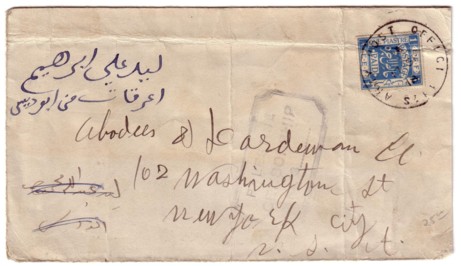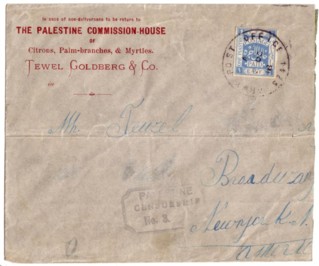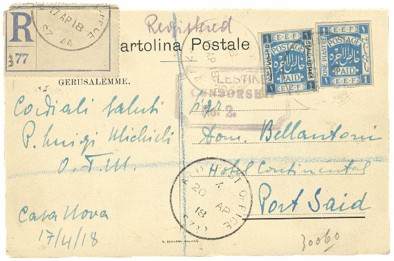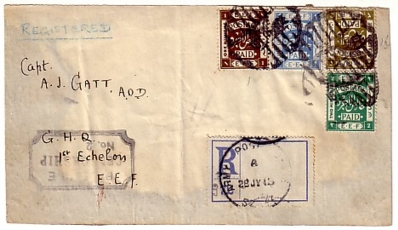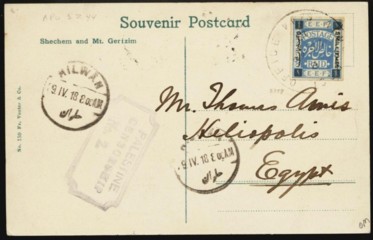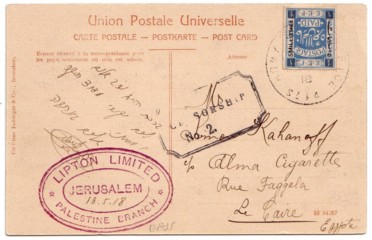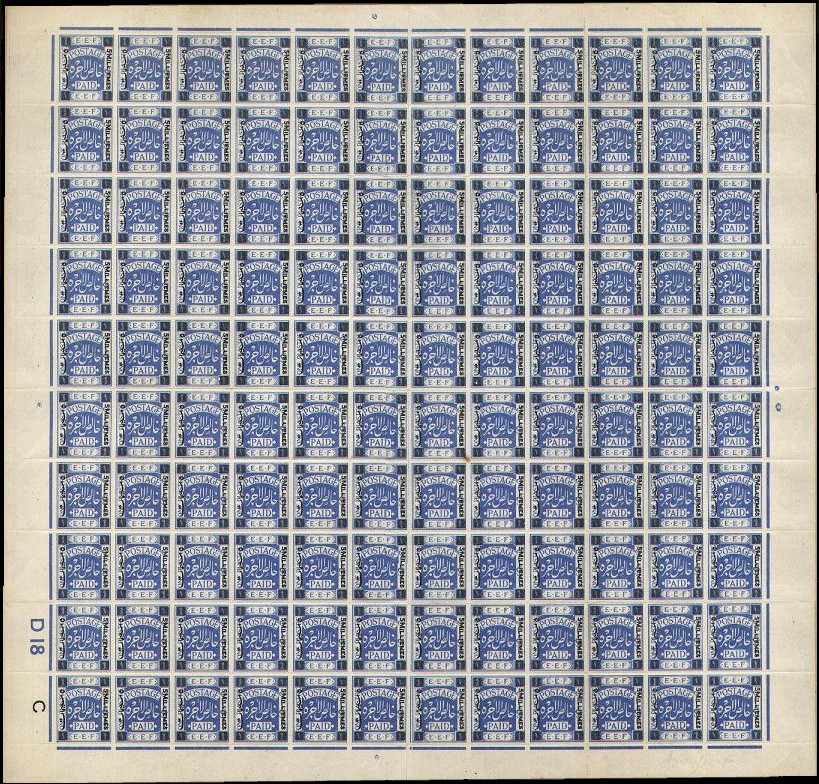|
Post offices there were already in plenty, stamps there were none, and in order to prevent a flood of overprinted and surcharged stamps, "Occupation" and such-like provisionals, both British and French, the Director of Army Postal Services of the Egyptian Expeditionary Force, Colonel Peter Warren, C.M.G., O.B.E., requested the Egyptian Survey Office to undertake the designing and printing of stamps of the value of 1 piastre.
Three sketches of suggested designs were submitted by J. H. Rowntree, of the Survey Office, and the one chosen, [...], was reproduced under that gentleman's direction by photo-lithography.
Four ferro-prussiate proofs of the final negative were sent to the D.A.D.A.P.S., G.H.Q., 2nd Echelon, and approved, [...]
Although the designer of that stamp was so modest that in his own words "the design was purposely made as simple as possible, with a view to preventing it being used, for the final issue," [...]
|
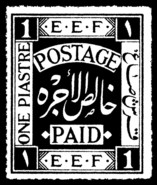
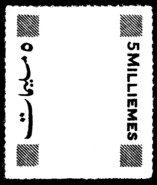




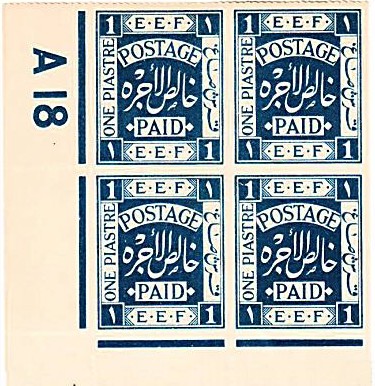
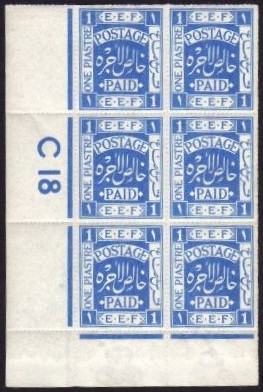
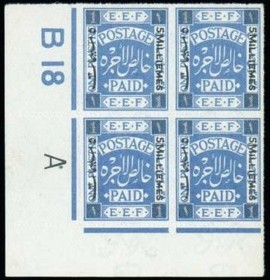
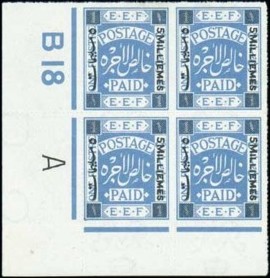

 Control number from transfer plate D and overprint plate A1.
Control number from transfer plate D and overprint plate A1.
